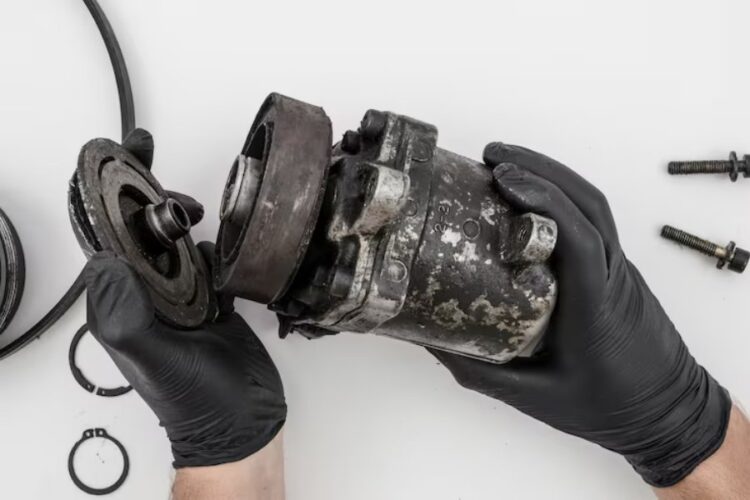Your car’s engine relies on perfect timing to run smoothly and efficiently. When the timing belt fails, the results can be sudden and devastating. A broken belt can cause severe damage to critical engine components in just a fraction of a second. Legal and mechanical experts at the Walton Telken Bragee Firm often witness the costly consequences these failures can have for consumers.
What the Timing Belt Does
The timing belt connects the crankshaft and camshaft, keeping the engine’s valves and pistons moving in harmony. Each time the pistons rise, the valves must open and close at precise moments. This coordination ensures that air and fuel flow correctly, allowing the engine to generate power smoothly.
When the belt breaks, that rhythm disappears instantly. Without synchronization, the pistons and valves can move independently, leading to collisions. The impact is often so severe that it bends or even breaks engine parts, resulting in expensive repairs or a full engine replacement.
How a Broken Belt Damages Valves
In most modern engines, valves open and close as pistons move up and down. The belt controls when each valve opens and closes. If it snaps, the camshaft stops turning while the crankshaft continues to spin.
This means the pistons continue to move and can strike the open valves. Even one impact can cause significant damage, bending valve stems or cracking the valve head. Once this happens, the engine cannot maintain compression, leading to rough operation or total failure.
Piston Damage and Engine Destruction
While bent valves are standard, piston damage is often more serious. When a piston hits an open valve, it can crack, chip, or develop holes. The broken pieces can then circulate through the engine, causing secondary damage to cylinder walls and bearings.
This chain reaction can destroy an engine from the inside out. Metal fragments can scratch the cylinder walls, damage piston rings, and reduce compression. In worst-case scenarios, the connecting rods may bend or break, rendering the engine unusable.
Interference vs. Non-Interference Engines
The level of damage caused by a broken timing belt depends mainly on the engine’s design. There are two main types: interference and non-interference engines.
In a non-interference engine, the valves and pistons never occupy the same space. If the belt breaks, the engine simply stops running without causing internal damage. While inconvenient, this type of failure is less costly and easier to repair.
In contrast, an interference engine allows valves and pistons to move within the same area at different times, enabling more efficient combustion. This design improves efficiency and performance, but it also increases the risk of damage when timing fails. In these engines, a broken belt almost always results in bent valves, cracked pistons, or even more severe damage.
Drivers should always know which type of engine their vehicle has. This knowledge helps determine how urgently a timing belt replacement should be performed.
Warning Signs Before Failure
A timing belt rarely breaks without warning. There are usually subtle signs that something is wrong. A high-pitched ticking noise, difficulty starting the engine, or misfiring are all early indicators of belt wear or misalignment.
Visual inspections can also reveal trouble. Cracks, fraying, or missing teeth on the belt indicate the belt is overdue for replacement. Even if no symptoms appear, following the manufacturer’s recommended replacement schedule is crucial for avoiding disaster.
Ignoring these warnings can lead to sudden failure while driving, putting both the engine and the driver at risk. Regular maintenance is far less expensive than repairing an engine destroyed by neglect.
Prevention Through Maintenance
The best way to avoid valve and piston damage is through proactive care. Mechanics recommend changing the timing belt every 60,000 to 100,000 miles, depending on the manufacturer’s specifications. Replacing it early can save thousands of dollars in future repairs.
Some vehicles also use timing chains instead of belts. While chains are more durable, they are not immune to wear and tear. Regular inspections and proper lubrication help ensure long-term reliability and optimal performance.
Replacing the water pump, tensioners, and pulleys simultaneously with the belt can also prevent future issues. These parts work together, and if one fails, the new belt can fail prematurely.
The Financial and Legal Implications
When a timing belt fails prematurely due to a manufacturing defect or poor maintenance guidance, drivers may have legal options. In some cases, repair costs can be recovered if negligence or faulty parts are proven to be the cause. Documentation of maintenance history and expert evaluation are key to determining responsibility.
Law firms specializing in automotive claims can help consumers navigate these complex situations. They ensure that repair costs and losses are properly addressed through warranty claims or legal settlements.
Final Thoughts
A broken timing belt can cause devastating damage to valves and pistons in seconds. Regular maintenance and early replacement are the best defenses against costly repairs and engine failure. When these breakdowns result from defective parts or poor service, drivers are entitled to fair compensation. The Walton Telken Bragee Firm continues to help vehicle owners understand their rights and hold manufacturers accountable for preventable damage.










